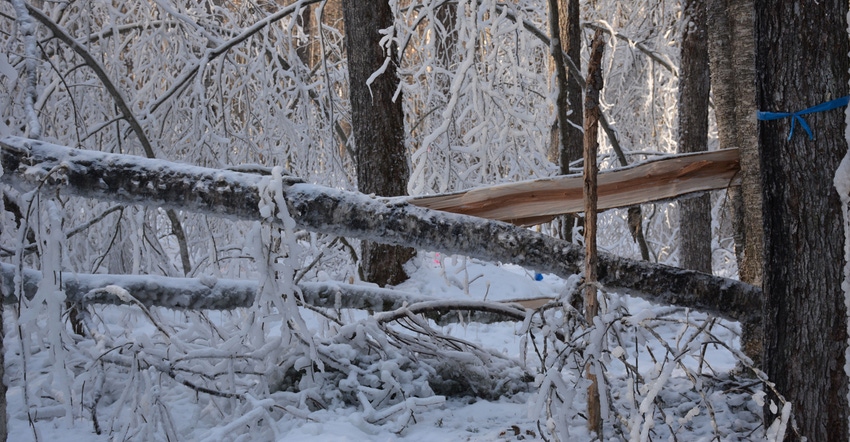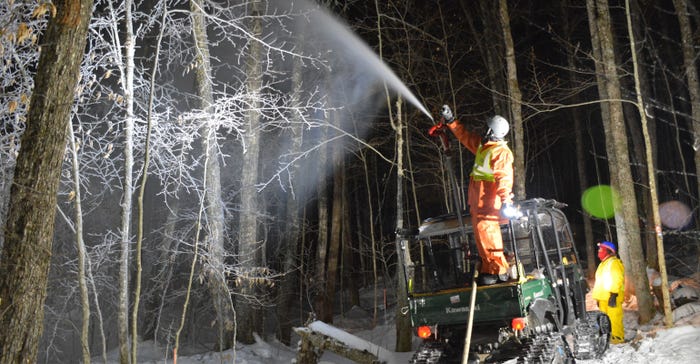
We've all experienced snow and ice storms that bend trees, damage branches and destroy woodland canopies for years. Researchers recently took to the New Hampshire woods at the USDA Forest Service Hubbard Brook Experimental Forest to build a "man-made" ice storm so they could study the impact on Northern hardwood forests for the first time in a controlled environment. Funded through a grant from the National Science Foundation, the Ice Storm Experiment takes an integrated look at the devastation we can expect from heavy ice and snow events in our farmstead forests.
Beginning with a pilot experiment in 2011, researchers initiated the actual studies last winter, hoping to better evaluate future severity and even frequency of ice storms, the short- and long-term responses of the forest, and the projected impact of future storms on woodlands.
After a year of preparation, icing crews waited for the perfect cold conditions to begin their experiments in January and February 2016, pumping water from a nearby stream using firefighting equipment and generators to create their own ice storm in the forest. They established 10 test plots in the woods, with each plot about the size of a basketball court. They pumped water 100 feet into the air, allowing the water to freeze and fall back onto the trees as ice under optimal weather conditions, to afford the simulation they needed. They applied no ice to control plots and applied a quarter-inch of ice to simulate a light storm; one a half-inch to simulate a moderate storm; and three-quarters inch to simulate a severe ice storm within the varied plots. It took two to four hours per plot to get the proper amount of icing.
"In January of 2017, scientists returned to the forest to re-ice one set of plots with a second half-inch coating of ice," says Lindsey Rustad, USDA Forest Service research ecologist for the project. "The goal of this second visit was to understand how forests respond to not just single, infrequent ice storms, but to more frequent icing events."

PUTTING ON THE ICE: In the New Hampshire woods, USDA Forest Service researchers created their own ice storm using firefighting equipment to pump water from a nearby stream 100 feet into the air over the forest. (Photo courtesy of Lindsey Rustad)

Early results prove what we might expect. Heavier icing produces more dramatic damage on the trees and the canopy. The amount of fine woody material, which would include twigs less than about an inch in diameter that fell after a single half-inch simulated ice storm was about the same as the amount that would come down naturally during an entire normal year. The volume of big debris, which would include branches and tree stems over an inch in diameter, that came down after a single half-inch ice storm was more than 10 times greater than we might expect for an entire normal year.
"Ice storms are a big deal in our changing world," Rustad says. "There hasn't been a lot of research about the short- and long-term effects of ice storms on forests, on forest health, vegetation growth, wildlife, fuel loads, and how nutrients like carbon and nitrogen cycle in the system," she explains. "We hope this work will allow people to be more prepared for how to handle big storms, because the more we understand about ice storms, the more people can identify risks like hazard trees on their land and have plans for what to do after, like planning for salvage cuts."
The information can help farmers and ranchers understand how their woodlands and rural tree resources might respond naturally to big weather disturbances over the long haul, not just from snow and ice storms, but other extreme weather events as well.
You can learn more at online.
About the Author(s)
You May Also Like






